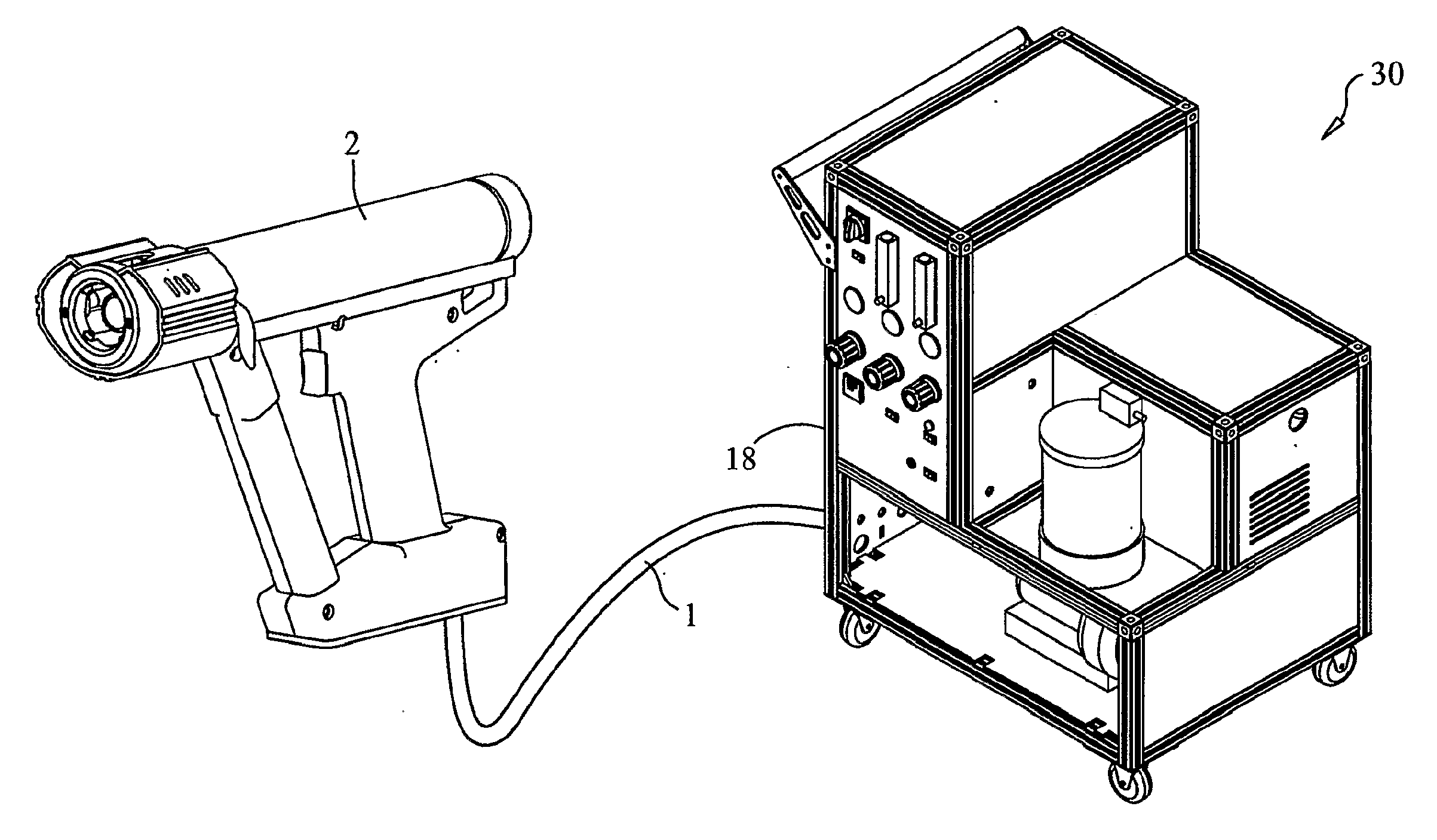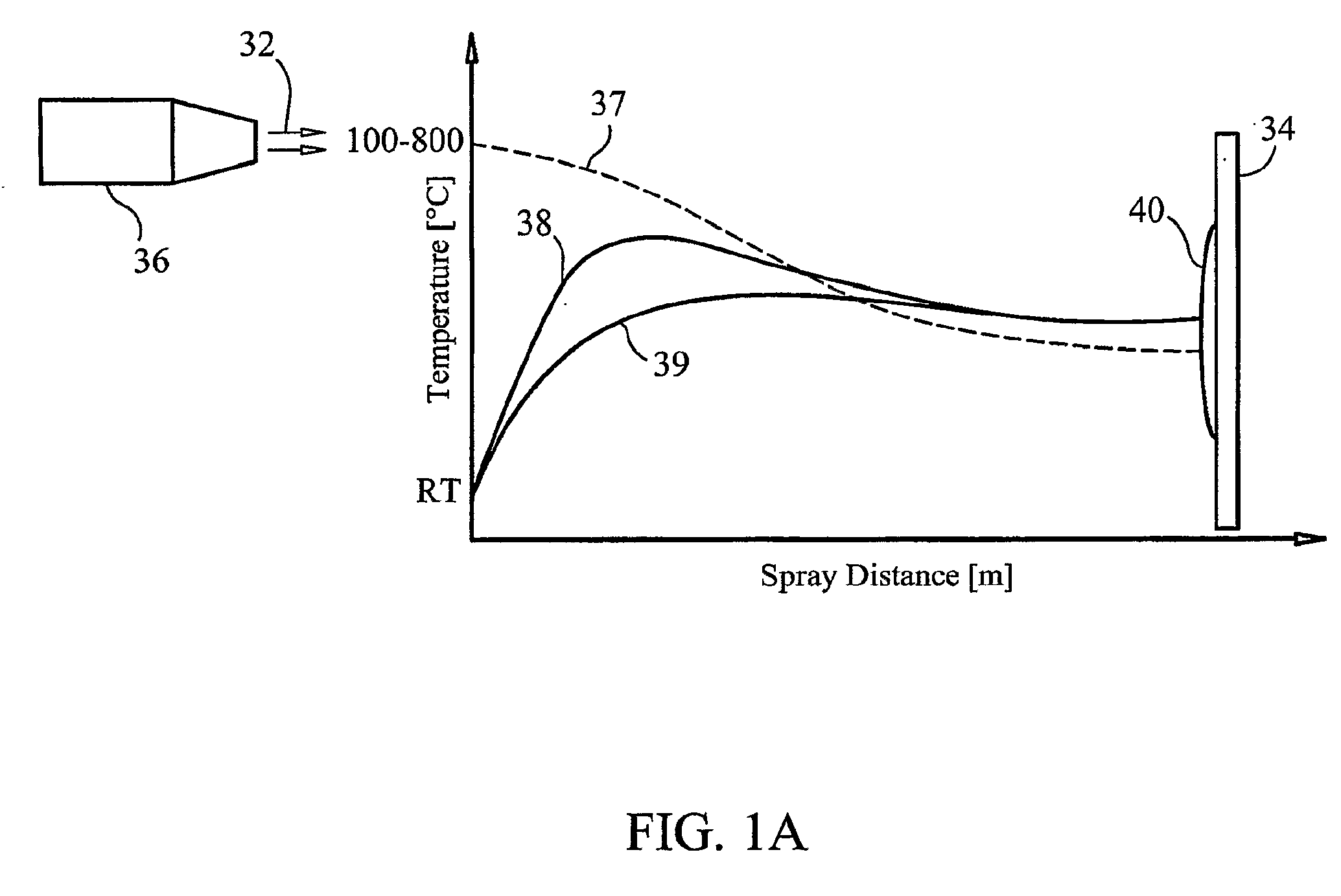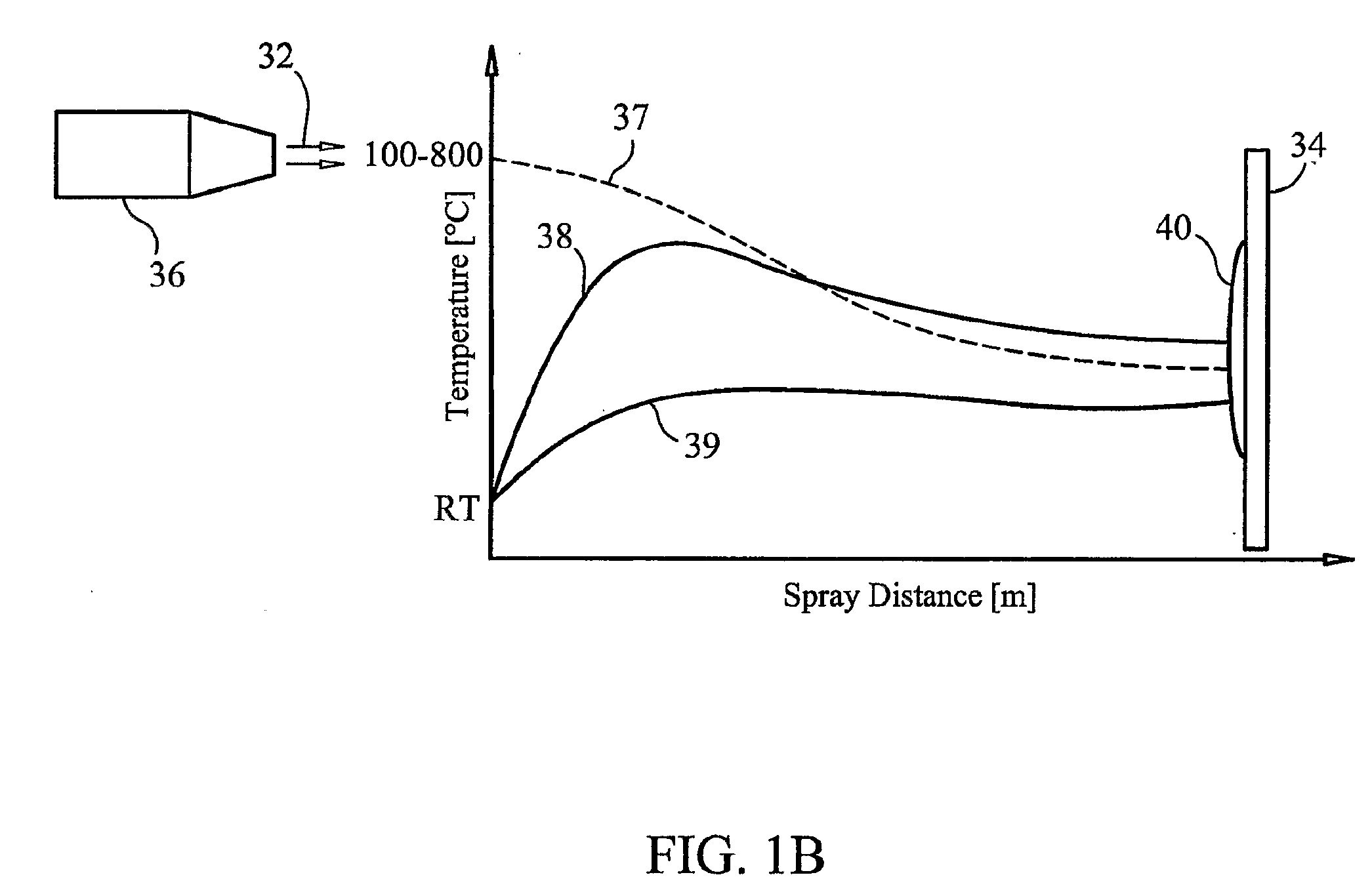Thermal spray formation of polymer coatings
a technology of polymer coating and thermal spray, which is applied in the field of thermal spray formation of polymer coating, can solve the problems of solvent spray methods that release toxic (volatile organic compounds, voc's) to the environment, and the background art methods and systems for applying polymer film coatings have serious limitations, so as to prevent the exposure of polymer materials
- Summary
- Abstract
- Description
- Claims
- Application Information
AI Technical Summary
Benefits of technology
Problems solved by technology
Method used
Image
Examples
Embodiment Construction
[0083]Referring to FIGS. 1A, 1B and 1C, schematic diagrams illustrating the operation of preferred embodiments of system 30 are presented. FIG. 1A illustrates changes in convective gas temperature 37, polymer powder particle surface temperature 38 and polymer powder particle core temperature 39 that occur with a polymer powder particle size of less than about 100 micrometers. FIG. 1B illustrates changes in convective gas temperature 37, polymer powder particle surface temperature 38 and polymer powder particle core temperature 39 that occur with polymer powder particle sizes that range from about 100 micrometers to about 300 micrometers. FIG. 1C illustrates changes in convective gas temperature 37, polymer powder particle surface temperature 38 and polymer powder particle core temperature 39 that occur with a polymer powder particle size of greater than about 300 micrometers.
[0084]In these diagrams, applicator head 36 discharges spray 32 comprised of hot air jet 13 and impinging mat...
PUM
 Login to View More
Login to View More Abstract
Description
Claims
Application Information
 Login to View More
Login to View More - R&D
- Intellectual Property
- Life Sciences
- Materials
- Tech Scout
- Unparalleled Data Quality
- Higher Quality Content
- 60% Fewer Hallucinations
Browse by: Latest US Patents, China's latest patents, Technical Efficacy Thesaurus, Application Domain, Technology Topic, Popular Technical Reports.
© 2025 PatSnap. All rights reserved.Legal|Privacy policy|Modern Slavery Act Transparency Statement|Sitemap|About US| Contact US: help@patsnap.com



